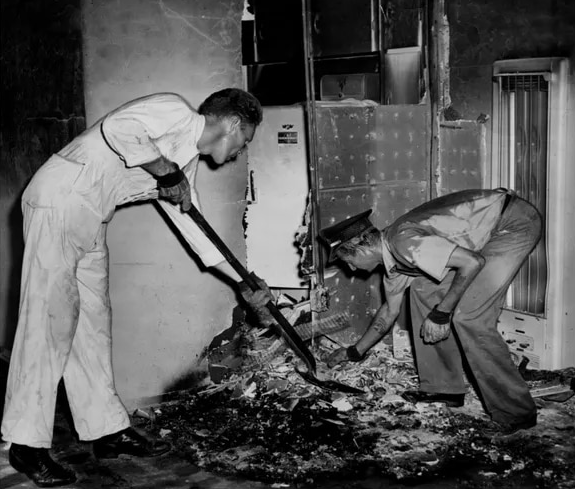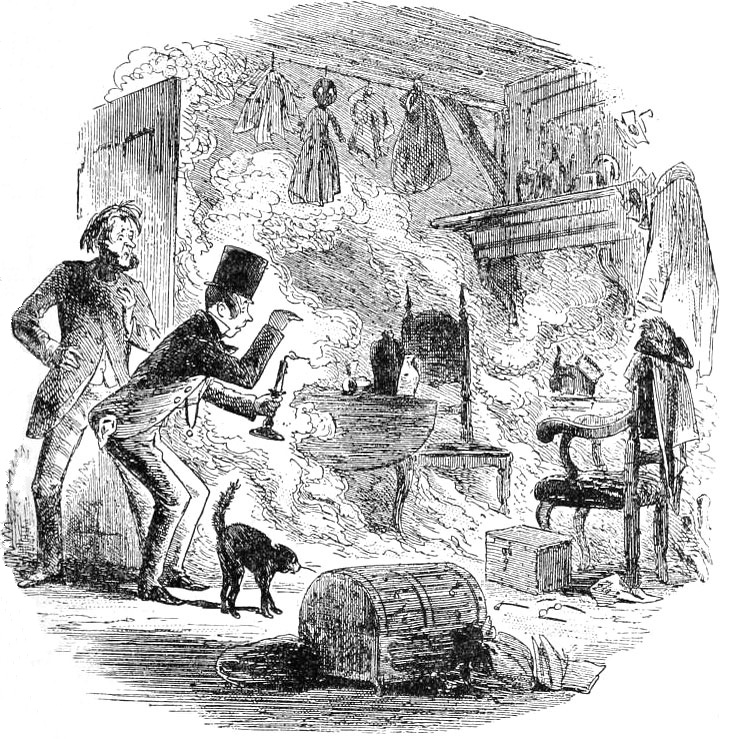If you’re familiar with the work of Charles Dickens, in particular his 1853 novel Bleak House, you may also be aware of a strange phenomenon termed “spontaneous human combustion”. In arguably the most famous literary case of this curiosity, Dickens details the grisly demise of junk merchant Mr Krook, who meets a fiery end, leaving behind just a pile of ash and a “dark greasy coating on the walls and ceiling”.
However, the concept isn’t solely consigned to Dickens’ imagination, or even to Victorian literature. In fact, in the last 400 years, there have been a few hundred reports of humans supposedly bursting into flames impromptu – which has now come to be referred to as “spontaneous human combustion” (SHC).
Alleged cases of SHC are a source of curiosity and speculation: the historic lack of a solid scientific explanation has created a breeding ground for unfounded theories that have generated more questions than they’ve answered. The most obvious of these is: is it actually real?
What is spontaneous human combustion?
Spontaneous combustion occurs when an object goes up in flames without an external ignition source – the blaze is initiated by chemical reactions within the object. Spontaneous human combustion is when this supposedly happens in humans, although, as we’ll find out, this is almost certainly not what’s actually happening.
Alleged cases tend to have several things in common. They typically involve the body being destroyed, while the immediate surroundings are left mostly intact save from a greasy coating on the walls. Not all of the body is turned to ash, however: some claim that the burning affects only the torso and that the extremities are left untouched. And, in keeping with its “spontaneous” designation, it’s generally observed that there is no obvious source of heat that might have started the fire.
Largely, victims fit a similar profile, being elderly, overweight, socially isolated, and female, and having consumed a large amount of alcohol.
SHC has also, conveniently for those who champion it, never been reliably witnessed.

Mary Reeser died mysteriously in 1951, leaving behind a pile of ashes.
Despite skepticism surrounding its existence, it continues to be accepted in medicolegal settings and is still sometimes listed as a legitimate cause of death. For example, in 2011, it was reported that a coroner ruled the death of a 76-year-old man in Galway, Ireland, a result of SHC.
All of the mystery shrouding the phenomenon has led to some pretty wacky theories from its advocates, who have hypothesized everything from poltergeists to “pyrotrons” to try and explain it.
A history of “spontaneous combustion” in humans
Accounts date back to the 17th century, with a large number documented in the 19th century, and just a handful in the last 100 years.
The first known case was described in 1641 by a Danish doctor and mathematician who recounted the untimely death of an Italian knight in the late 15th century, research biologist Brian J Ford wrote for New Scientist in 2012. The knight reportedly drank wine one night before mysteriously bursting into flames.
Several other accounts followed, including those involving alcohol, leading to the Victorian theory that SHC was retribution for excessive alcohol consumption. Dickens himself fanned the flames of this myth, writing Krook as an alcoholic.
In 1851, Justus von Liebig, one of the principal founders of organic chemistry, conducted a series of experiments, finding that anatomical specimens stored in 70 percent ethanol do not burn, and nor do rats injected with ethanol, thus refuting the alcohol as the sole cause of the SHC idea.
Without the booze to blame, fingers have been pointed all over the place, including at intestinal gases, bio-electricity, over-active mitochondria, and even poltergeists, Ford wrote in a 2012 article.
However, none of these theories hold much scientific weight.

The discovery of the charred remains of Krook, from an 1895 edition of Bleak House.
A modern explanation?
So what then, if not alcohol or ghosts, could explain this phenomenon?
“The most likely explanation is the ‘wick effect’,” Roger Byard, a Professor of Pathology at the University of Adelaide, told IFLScience.
“I.e. reclusive alcoholics who are overweight and wrapped in blankets who may spill some of the spirits they are drinking and then drop a lighted cigarette – all of this results in slow combustion.”
Essentially, the wick effect requires an external source of ignition that causes body fat to melt. Following a tear in the skin, the fat gets soaked up by the victim’s clothes, which act like the wick of a candle and burn for an extended period of time at a relatively low temperature.
“It has been shown that a cloth wick in melted human fat can continue to burn at temperatures as low as 24°C [75°F],” Prof. Byard wrote in 2016. “[This] is proposed as an explanation for the limitation of the size of the fire and the preservation of adjacent body parts and clothing.”
The whole process could be exacerbated by alcohol spilling onto clothes, especially if the deceased had been smoking, Byard continued.
The wick effect, brought on by an overlooked external source of ignition, is currently the prevalent scientific explanation for purported cases of SHC, which gives us the answer to our initial question:
Is spontaneous combustion in humans real?
“There is no doubt that SHC is a myth,” Prof. Byard told IFLScience. “Humans do combust but not spontaneously. That is the reason why no case has actually reliably occurred under observation.”
That’s not to say that, in exceptional circumstances, fire deaths that have the characteristic features of SHC don’t occur, just that the explanation for these is more mundane than many, a certain Victorian novelist included, would have us believe.
“There is really no need to evoke the activities of the supernatural, or the potentially explosive effects of excessive intestinal hydrogen,” Byard concluded in his article. The reality is likely much simpler.
All “explainer” articles are confirmed by fact checkers to be correct at time of publishing. Text, images, and links may be edited, removed, or added to at a later date to keep information current.
Source Link: Is Spontaneous Combustion In Humans Real?